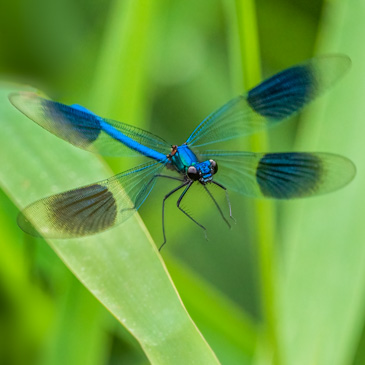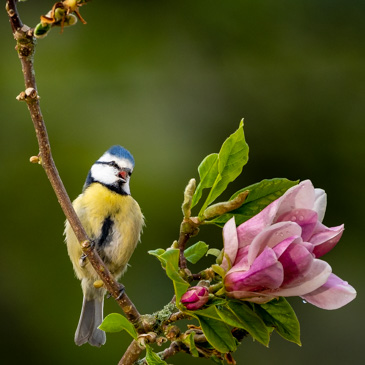The Bug Safari Project
It started with caterpillars. There’s an Honesty plant in our garden, and it was crawling with Large White butterfly larvae. I took a few photos. Then I noticed something odd. That led to some research, a few more photos — and suddenly I was in the middle of a project.
Large White caterpillar
OM Digital Solutions OM-1 Mark II and Olympus M.60mm F2.8 Macro at 60.0 mm (35 mm equivalent: 120.0 mm). 1/250s at f/8.0, ISO 800.

An idyllic view of Nature. This was how it started.
Stockholm Syndrome
OM Digital Solutions OM-1 Mark II and Olympus M.60mm F2.8 Macro at 60.0 mm (35 mm equivalent: 120.0 mm). 1/60s at f/6.3, ISO 800. Focus stack of 15 images.

As I looked around the plant, I noticed that some of the caterpillars were resting on this yellow, porridge like substance. That led to some research and I discovered that Large White caterpillars are often parasitised by braconid wasp larvae that emerge and spin these yellow cocoons. This caterpillar was even exhibiting protective behaviour: when I touched it with my finger it reared up like the shark in Jaws. More research — and I discovered this is known as the “bodyguard hypothesis”. The parasitised caterpillar is still alive: it’s defending the parasites that ate it. The wasp larvae somehow manipulate it into acting like a bodyguard for their cocoons. It’s horrifying, but also… weirdly clever. Like Nature’s equivalent of Stockholm syndrome.
Nature most brutal
OM Digital Solutions OM-1 Mark II and Olympus M.60mm F2.8 Macro at 60.0 mm (35 mm equivalent: 120.0 mm). 1/100s at f/6.3, ISO 800.

That got me looking at more caterpillars to see if I could observe one where the wasp parasites were emerging. In the previous image, the parasitisation looks too peaceful. I wanted to show Nature with its gloves off. It took a while, but I found this one where the wasp larvae are emerging from the caterpillar's body.
Large White Chrysalis
OM Digital Solutions OM-1 Mark II and Olympus M.60mm F2.8 Macro at 60.0 mm (35 mm equivalent: 120.0 mm). 1/100s at f/4.0, ISO 200. Focus stack of 49 images.

Just to end this section on a happier note, some of the caterpillars do indeed manage to survive. This particular chrysalis was adhered to a window. A macro lens reveals that the chrysalis is full of texture, translucency and subtle markings.
Buff Arches
OM Digital Solutions OM-1 Mark II and Olympus M.60mm F2.8 Macro at 60.0 mm (35 mm equivalent: 120.0 mm). 1/100s at f/4.0, ISO 400. Focus stack of 63 images.

I was getting drawn in so I decided to invest in a moth trap and see what else I could discover. On the first night, I was overwhelmed: I must have caught upwards of 150 moths and there were around 20 or so different species. I could only photograph a subset before letting them go.
Buff-tip moth
OM Digital Solutions OM-1 Mark II and Olympus M.60mm F2.8 Macro at 60.0 mm (35 mm equivalent: 120.0 mm). 1/100s at f/4.0, ISO 800. Focus stack of 23 images.

One aspect of moths that interested me was mimicry (or more accurately, how they often masquerade as something other than a moth). I was gobsmacked when I discovered this Buff-tip moth. This isn’t camouflage in the usual sense. It’s masquerade: not hiding by blending in, but by pretending to be something else. A broken twig, in this case.
Buff-tip moth
OM Digital Solutions OM-1 Mark II and Olympus M.60mm F2.8 Macro at 60.0 mm (35 mm equivalent: 120.0 mm). 1/100s at f/4.0, ISO 400. Focus stack of 63 images.

This is one of the most beautiful insects I've ever photographed. At rest, it looks just like a broken birch twig. The camouflage is astonishing. I just couldn’t stop admiring it.
Coxcomb Prominent
OM Digital Solutions OM-1 Mark II and Olympus M.40-150mm F2.8 at 150.0 mm (35 mm equivalent: 300.0 mm). 1/200s at f/4.0, ISO 400.

This Coxcomb Prominent is another example of a moth masquerading as something else. Again, it looks like part of a snapped branch.
Peppered Moth
OM Digital Solutions OM-1 Mark II and Olympus M.60mm F2.8 Macro at 60.0 mm (35 mm equivalent: 120.0 mm). 1/100s at f/4.0, ISO 200. Focus stack of 25 images.

The Peppered Moth is quite literally a textbook example of natural selection. I placed this Peppered Moth on a nearby tree to photograph it. It may not look like it in this close-up photograph but the moth was very difficult to see against the bark, almost invisible.
Lesser Swallow Prominent
OM Digital Solutions OM-1 Mark II and Olympus M.60mm F2.8 Macro at 60.0 mm (35 mm equivalent: 120.0 mm). 1/100s at f/4.0, ISO 200. Focus stack of 33 images.

This is another common moth — common but beautiful.
Light Emerald
OM Digital Solutions OM-1 Mark II and Olympus M.60mm F2.8 Macro at 60.0 mm (35 mm equivalent: 120.0 mm). 1/100s at f/4.0, ISO 800. Focus stack of 39 images.

This moth with its paper-thin wings would be heralded if it flew in the daytime.
Common Footman
OM Digital Solutions OM-1 Mark II and Olympus M.40-150mm F2.8 at 150.0 mm (35 mm equivalent: 300.0 mm). 1/500s at f/4.0, ISO 1000.

British moth names come from an era when gentlemen scientists named moths from behind a sherry glass, with a servant hovering nearby. You can almost imagine Lord Mothy McMothface in a drawing room with heavy curtains, thick with pattern, embroidered everything.
Dark Arches
OM Digital Solutions OM-1 Mark II and Olympus M.60mm F2.8 Macro at 60.0 mm (35 mm equivalent: 120.0 mm). 1/100s at f/4.0, ISO 400. Focus stack of 47 images.

Identifying moths is an art unto itself. I now have two books and various web sites I use to try to identify them. At first I confused this Dark Arches with a Peppered Moth but once you look closely it’s much easier to see how they differ.
Peppered Moth and Green Arches
OM Digital Solutions OM-1 Mark II and Olympus M.60mm F2.8 Macro at 60.0 mm (35 mm equivalent: 120.0 mm). 1/100s at f/4.0, ISO 400. Focus stack of 37 images.

I carefully placed these moths onto this piece of bark. I’ve no idea if they would roost next to each other in the real world.
Cockchafer
OM Digital Solutions OM-1 Mark II and Olympus M.60mm F2.8 Macro at 60.0 mm (35 mm equivalent: 120.0 mm). 1/100s at f/4.0, ISO 400. Focus stack of 46 images.

This cockchafer flew into the moth trap, so I decided to include him in my haul of interesting insects.
Violet Ground Beetle
OM Digital Solutions OM-1 Mark II and Olympus M.60mm F2.8 Macro at 60.0 mm (35 mm equivalent: 120.0 mm). 1/100s at f/4.0, ISO 400. Focus stack of 99 images.

This beastie appeared when I was sweeping out my garage. As I had my camera set up prepared for macro photography, I decided to include him too.
Eyes Opened
One of the many characteristics I enjoy about photography is that it makes me notice: it makes me open my eyes to the world and discover new activities. For example, I was never much of a walker until I took up landscape photography — and now I enjoy hiking for its own sake. I suspect that a similar thing may happen with moths: what started as “that might make a good picture” is quickly becoming “these are fascinating in their own right.”
I can see a new project emerging from its chrysalis!


